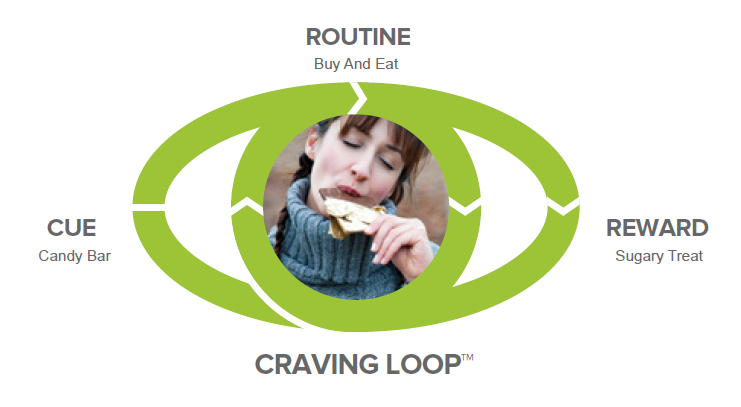Unraveling reinforced habits takes time
Some of the most common questions I see in our Optimal Health Community are “How do I beat cravings?” or “How do I stop emotional eating?”
These are difficult obstacles because the roots of a habit can run deep. When it comes to cravings, we have likely reinforced the same habit loop day after day for decades. Unraveling that programming in a day or a week can be frustratingly painful. The process takes time, and it takes mindfulness.
Before we talk about a specific strategy for conquering cravings, we should review the structure of habits. I wrote about this topic extensively in Stop. Challenge. Choose, so I don’t want to spend too much time going back over the same ground, but this excerpt is crucial:
Here’s how it works. Your mind identifies a cue, triggering an automatic routine that is reinforced with a satisfying reward. It starts as simply as this:
- You see a candy bar (cue);
- you purchase, unwrap, and eat the candy bar (routine);
- and you get a great-tasting treat (reward).

Once our brain learns that a candy bar is a delicious, sugary treat, the very sight of the candy bar creates an anticipation of the sugar high. If we do not get it, we are disappointed. Over time, as we experience the repeated high from the treat, we start craving the high from eating a candy bar. You now have created a loop that can be quite powerful and totally unconscious!
In the previous example, the reward is listed as a sugary treat, but that’s really a placeholder. A sugary treat could be a means of relieving stress, coping with boredom, or dealing with being tired. In many ways, all of these are emotional rewards as we rarely reach for a candy bar out of a need for actual sustenance.
Regardless of what that reward means for you, understanding the structure of your habit loops can help you to become more aware of the choices that you make. With practice, you can recognize the cue and work to replace the routine with a healthier alternative. If you are creative, you can achieve the same emotional reward with a Habit of Health as you did with a Habit of Disease. Making the healthy choice, even when you are aware that you have a choice to make, can still be a challenge.
Which brings us to a big tip for conquering your cravings.
Researchers at the University of Innsbruck (Austria) recently published a study in the journal PLOS ONE. Essentially the study found that a brisk walk prior to facing a temptation made the cravings less intense and easier to resist compared to facing a craving after long periods of being sedentary. Exercise, then, can become a sort of self-fulfilling prophecy. You get the rewards of being more active—and there are many—and you will be better equipped to overcome cravings in the future.
This research adds a new layer to how we reprogram habits. Longtime readers will know that exercise can become the healthy replacement routine in your habit loop. Starting to feel stressed at work? Take a stroll to the far water cooler or use part of your lunch to walk a loop around the office building. Exercise has just as many physical benefits as emotional benefits, and now we know that being active can help you challenge your Habits of Disease in the future.
Get started now with a quick walk.